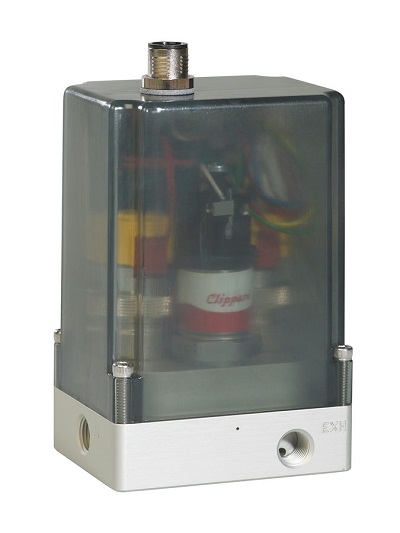The new Cordis HP500 from Cincinnati-based Clippard uses the company’s proven EV line of electronic valves to allow for steady, repeatable downstream pressure under static conditions. The result is precise, linear pressure control within a closed-loop system with high accuracy and repeatability.

Clippard’s Cordis HP500 pressure regulator provides precise, linear digital pressure control within a closed-loop system.
The Cordis HP500 uses a microcontroller, integrated pressure sensor, and two Clippard EV electronic valves. The inlet valve is connected to the moderately regulated supply pressure and the exhaust valve is connected to a port that vents excess pressure to atmosphere.
Once a command is increased, the inlet valve opens up to allow supply pressure to pass over the sensor element, which provides an active feedback for the microcontroller to satisfy the set point in the process. If at any point the sensor detects a value higher than the set point, the exhaust valve will modulate open to vent off the excess pressure to maintain a stable and accurate control pressure in the process.
The Cordis HP500 pressure regulator is adaptable to a variety of sensors that can close the loop around pressure.
According to the company, the primary Cordis HP500 benefits include:
• Smooth linear control
• Real-time adjustable PID control
• Integrated internal or external sensor feedback
• Customizable pressure ranges and mounting options.
The unit is suitable for clean, dry non-corrosive gases with operating pressure from 0 to 500 psig. Typical response time is <20 ms with an accuracy ±0.5% of full scale and linearity of ≤0.2%. Maximum hysteresis is ≤0.25% full scale. Command signals include 0 to 10 Vdc and 4 to 20 mA, and 3.3 Vdc serial. Maximum current draw is <250 mA. Port size is 1/8 in. NPT or G 1/8.
The HP500 complements the standard Cordis EPR.
Clippard
www.clippard.com
Filed Under: Pneumatic Tips